How to Clean the Tongue Properly at Home in 5 Steps
As a participant in the Amazon Services LLC Associates Program and other affiliate programs, Easy Homemade Life may collect a share of sales or other compensation from the links on this page. This comes at no additional cost to you, and all the prices and availability are accurate at the time of publishing.
Are you interested in learning more about improving your oral hygiene and preventing bad breath?
This post is dedicated to exploring the benefits of tongue cleaning and providing step-by-step instructions on how to clean the tongue properly.
With our tips, you’ll be on your way to better oral health in no time!
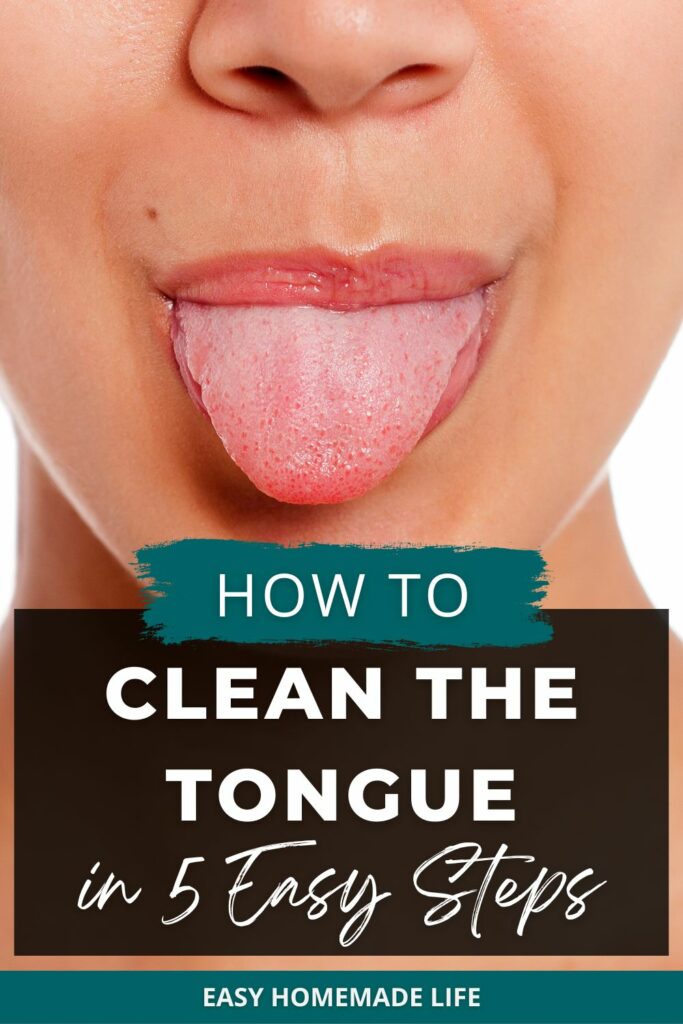
Why Tongue Cleaning is Important for Good Oral Health
Do you brush your teeth regularly but neglect your tongue? If so, you’re not alone. Many people overlook the importance of tongue cleaning in their oral hygiene routine.
We cannot reach optimum health if we neglect taking care of one part of our body, no matter how small it is. Just like caring for your nails contributes to nail health or regularly cleaning your ears helps maintain your ear health, keeping your tongue bacteria-free has positive effects on your oral health.
A clean tongue is crucial for good dental health and can significantly impact your overall well-being. Did you know that bacteria on the tongue cause up to 90% of bad breath?
That’s right; simply brushing your teeth may not be enough to combat bad breath. Bacteria and food particles can accumulate on the tongue’s surface, leading to bad breath, gum disease, and tooth decay.
Tongue cleaning can help remove this buildup and improve your oral health. Not only can it prevent bad breath, but it can also improve your sense of taste and reduce your risk of gum disease and tooth decay.
By making tongue cleaning a part of your daily oral hygiene routine, you can enjoy fresher breath, better taste, and improved overall health.
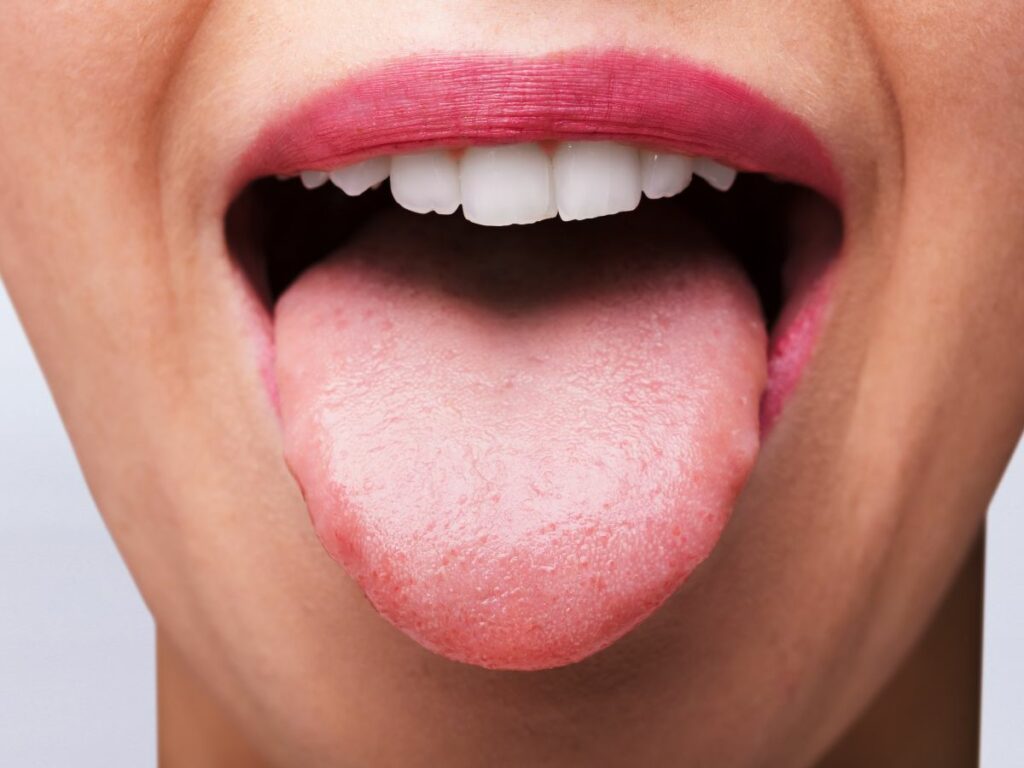
Common Causes of Tongue Buildup and Bad Breath
The tongue is a common site for odor-causing bacteria and can easily accumulate debris and food particles, leading to bad breath and poor dental health.
Here are some of the most common causes of tongue buildup and bad breath:
- Poor oral hygiene – Poor brushing technique and flossing habits can allow harmful bacteria and food particles to accumulate on the surface of the tongue.
- Dry mouth – A dry mouth can lead to a decrease in saliva production, creating an environment ideal for bacterial growth.
- Certain foods and drinks – Certain foods and drinks, such as coffee, alcohol, and sugary foods, can contribute to bacterial growth and bad breath
- Smoking – Smoking can cause dry mouth and decrease saliva production, increasing tongue bacteria and bad breath.
- Medical conditions – Certain medical conditions, such as gum disease, diabetes, and sinus infections, can also contribute to bacteria buildup on the tongue and bad breath.
While there are several causes of tongue buildup and bad breath, tongue cleaning can help alleviate these issues. Regular tongue scraping can remove bacteria accumulation, improving your oral hygiene and reducing the risk of bad breath.
Additionally, incorporating antiseptic or mouth rinses into your oral hygiene routine is another great way to help reduce bacterial growth and improve the overall health of your mouth.
Overall, if you’re struggling with tongue buildup and bad breath, it’s important to take action to improve your oral hygiene. You can enjoy fresher breath and a healthy mouth by identifying the root cause of your symptoms and incorporating regular tongue cleaning into your routine.
Crafting a balance between daily needs and weekly or monthly self-care treats like a relaxing bubble bath and exfoliating body scrub will bring harmony into your life.

The Surprising Benefits of Tongue Cleaning
Did you know a healthy tongue can offer more benefits than freshening your breath?
Let’s explore some of the surprising benefits of cleaning your tongue:
- Better oral health – Tongue cleaning helps remove plaque buildup and bacteria accumulation on the tongue’s surface, reducing the risk of oral health issues such as tooth decay and gum disease. It complements daily brushing and flossing, providing a comprehensive approach to oral hygiene.
- Enhanced taste perception – Cleaning your tongue helps remove the buildup that can dull your taste buds. By cleaning your tongue on a regular basis, you can experience more vivid and enjoyable flavors, enhancing your dining experience.
- Improved digestive health – The tongue plays a crucial role in digestion by aiding in food breakdown. By keeping your tongue clean, you promote healthier digestion and nutrient absorption.
- Overall well-being – Studies have shown that oral health is linked to overall health. Oral hygiene issues are associated with an increased risk of systemic health conditions such as cardiovascular disease and respiratory infections. By prioritizing tongue brushing or cleaning, you contribute to your overall well-being.
Research supports the benefits of tongue cleaning. A study published in the Journal of Periodontology found that tongue cleaning significantly reduced tongue coating, a common contributor to bad breath and bacteria buildup.
Another study published in the Journal of Clinical Periodontology concluded that tongue cleaning, when combined with tooth brushing, was more effective in reducing bacteria than tooth brushing alone.
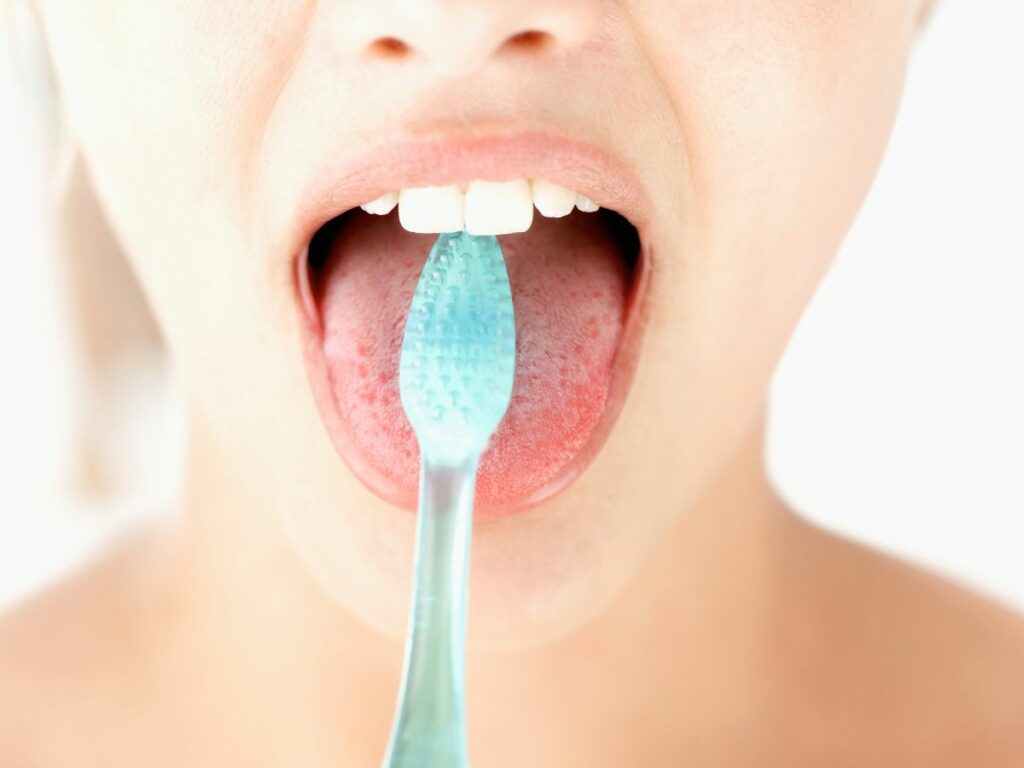
The Different Methods of Tongue Cleaning
There are several ways to clean your tongue, and each method has its benefits.
Here are some of the most popular methods of tongue cleaning.
To make tongue cleaning a part of your daily oral hygiene routine, start by choosing a method that works best for you, whether it’s a tongue scraper, toothbrush, or mouthwash.
Tongue Scraper
A tongue scraper is designed to clean the tongue’s surface. Think of a U-shaped copper or stainless steel piece of metal with little grips on either side. That will give you a visual. I recommend a pure copper tongue scrapper.
To use it, start at the back of the tongue and gently scrape forward towards the tip, rinsing the scraper after each pass. Repeat until you’ve covered the entire surface of your tongue.
It might feel a little weird at first or even trigger a gag reflex, but with practice, tongue scraping can become an easy and effective way to improve good health and prevent bad breath.
Be careful not to apply too much pressure, which can cause discomfort or injury.
Toothbrush
Your toothbrush can also be used to clean your tongue.
After brushing your teeth, gently brush your tongue using back-to-front strokes for the most thorough cleaning. Rinse your mouth and toothbrush with water after each stroke.
Start with a soft-bristled toothbrush and avoid brushing too hard to prevent irritation or damage to your tongue.
Mouthwash
Mouthwash is one of the main ways to kill harmful bacteria in your mouth, including the bacteria on your tongue.
After brushing your teeth and tongue, rinse your mouth with an antimicrobial mouthwash for 30-60 seconds.
Then, spit the mouthwash out and rinse your mouth with water.
No matter which method you choose, there are a few safety measures you should keep in mind:
- Use a gentle touch – Your tongue is a sensitive organ, so be gentle when cleaning it. Avoid using excessive force or applying too much pressure.
- Use a clean tool – Whether using a tongue scraper or toothbrush, ensure it’s clean before use. Rinse the tongue cleaner of choice with water before and after each use to prevent the spread of bacteria.
- Be consistent – To enjoy the benefits of tongue cleaning, make it a consistent part of your oral hygiene routine. Aim to clean your tongue once or twice a day, preferably after brushing your teeth.
Step-by-Step Tutorial to Tongue Scraping
Equipment
- 1 Tongue scraper
Instructions
- Position the scraper. Stick out your tongue and place the scraper at the back of your tongue.
- Scrape your tongue. Gently pull the scraper forward along your tongue, applying enough pressure to remove any buildup on the surface. Repeat this process 5-10 times, rinsing the scraper with water after each pass.
- Rinse your mouth. After scraping your tongue, rinse your mouth with water or mouthwash to remove food debris and bacteria.
- Clean the scraper. Rinse it with water and wipe it clean with a towel or tissue.
- Repeat on a daily basis. Adding a daily tongue cleaning to your oral hygiene routine is the most effective way to achieve the best results.


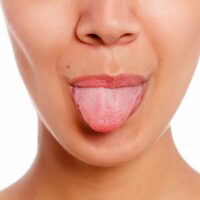

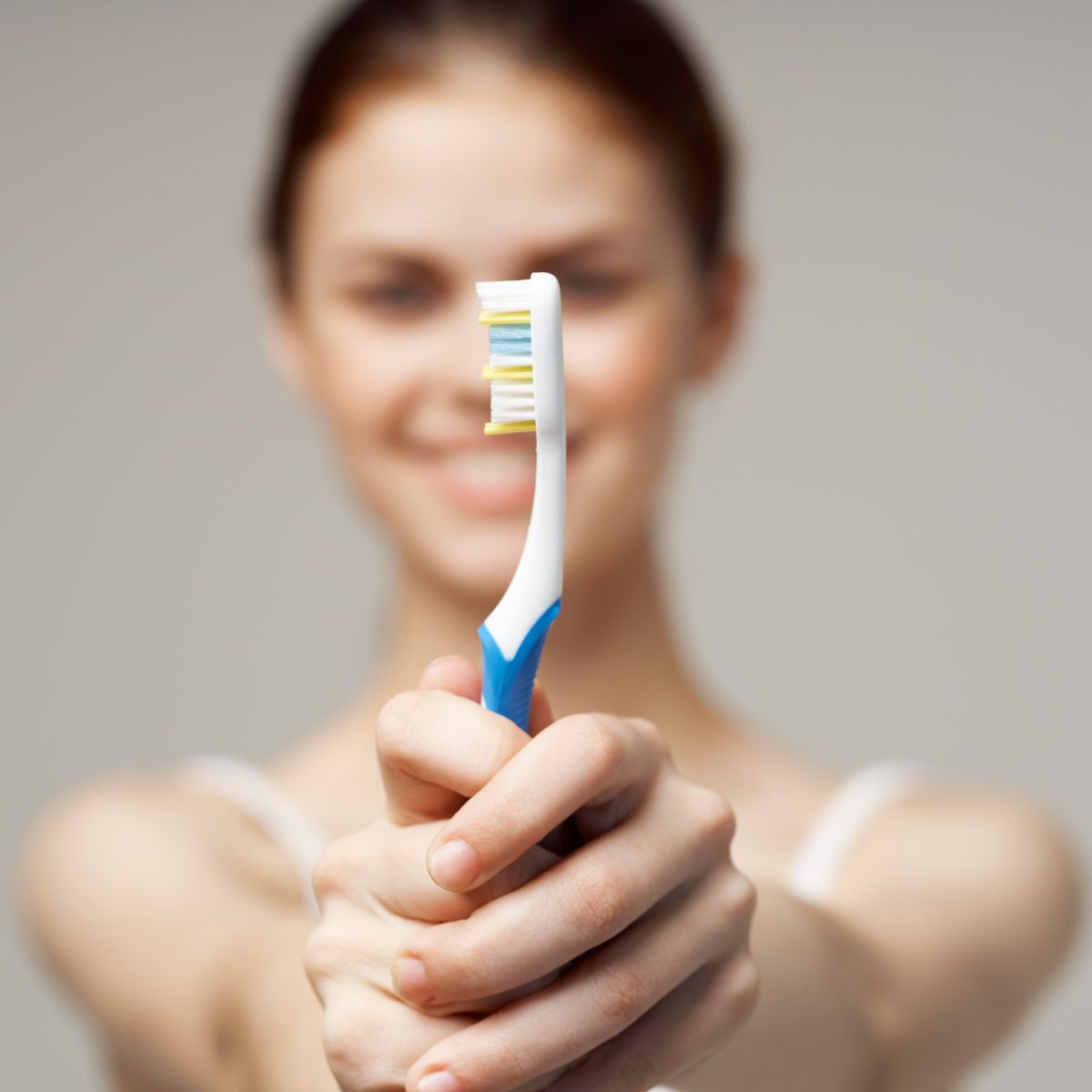
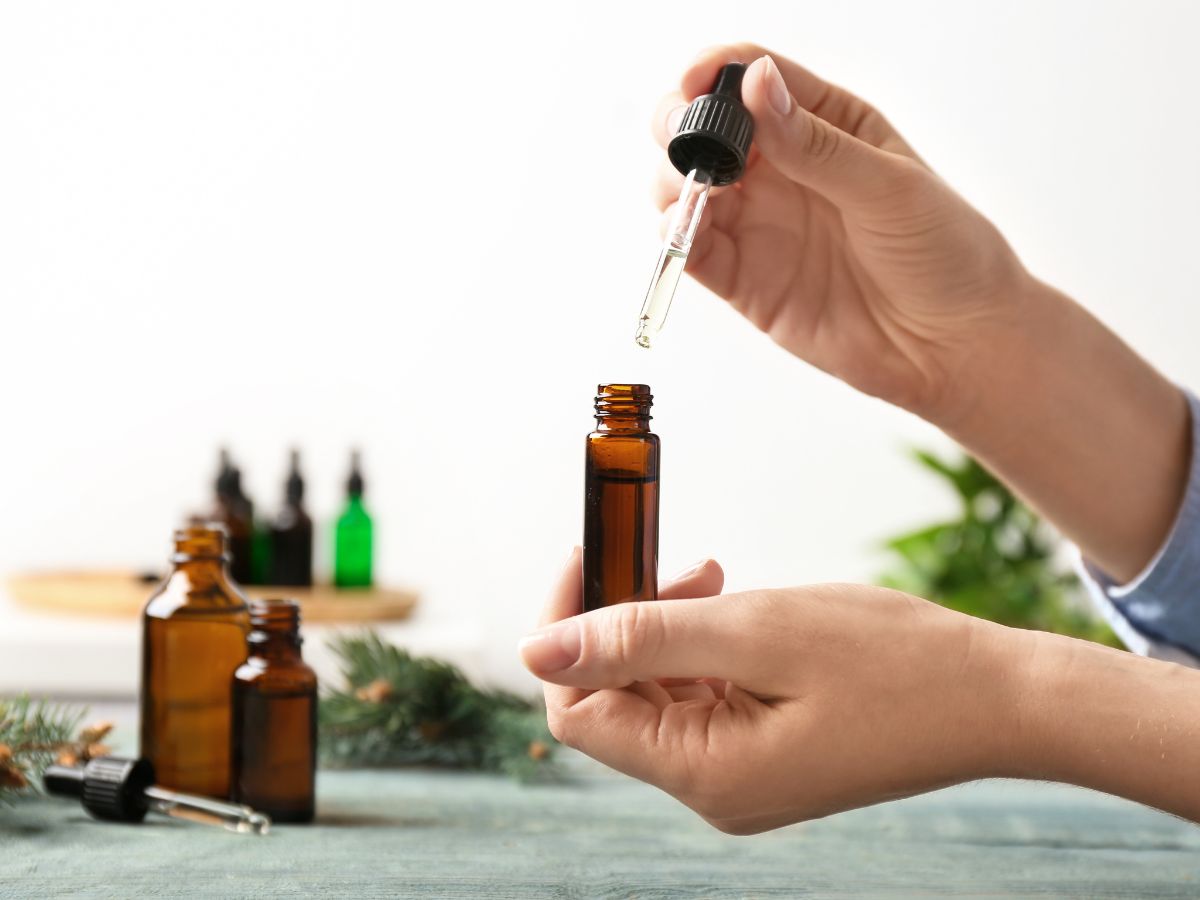
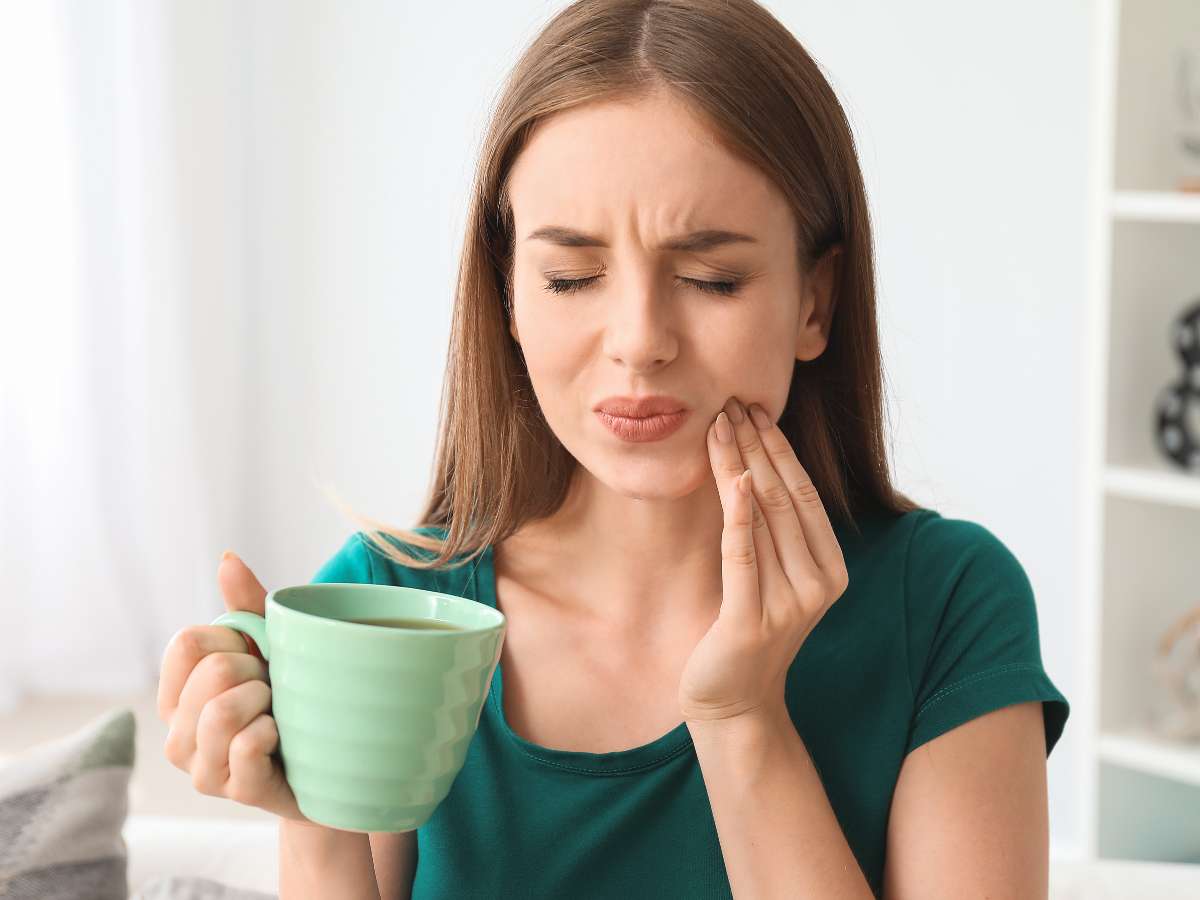
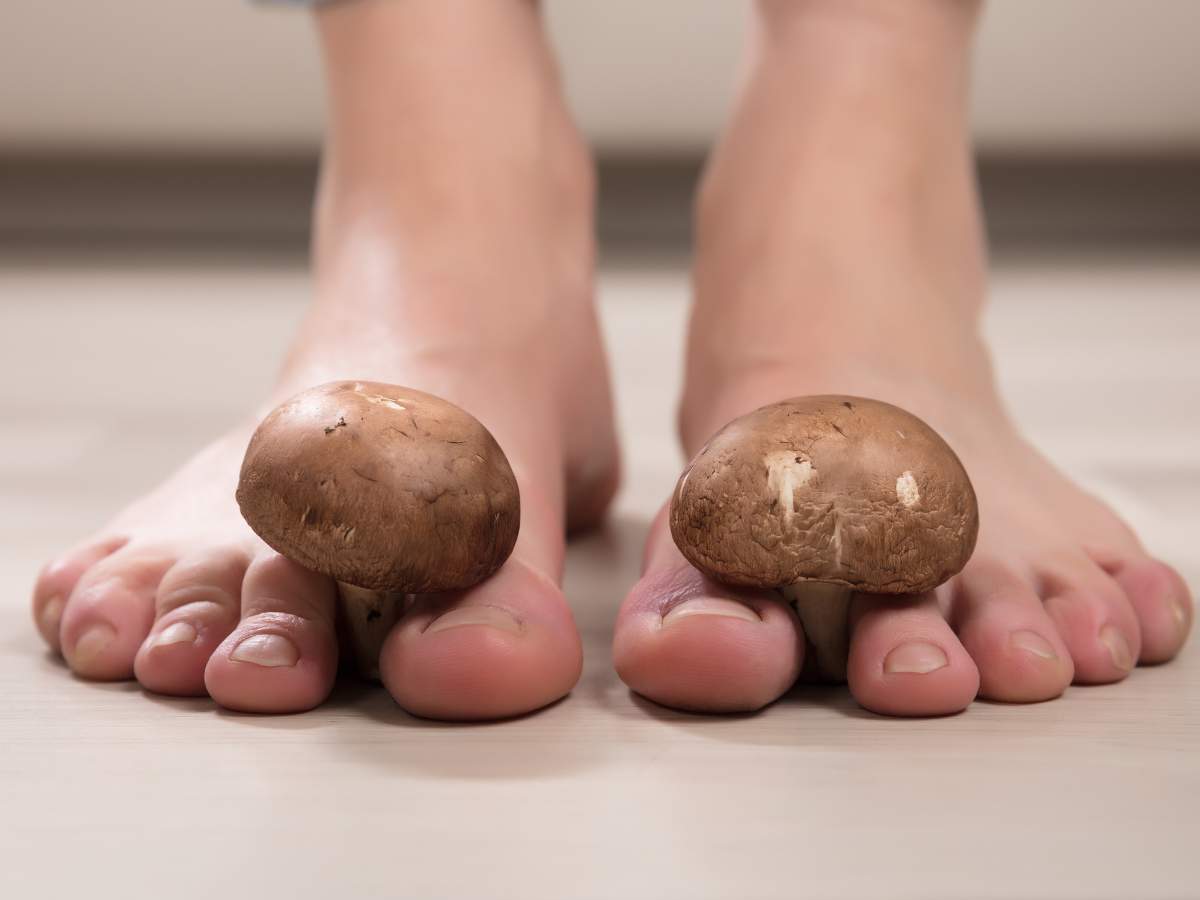

I had no idea that build up on the tongue could affect the way food tastes. Crazy! Going to upgrade my plastic scraper to a copper one!
Tongue scraping is a quick and easy way to stay on top of oral health. Thanks for visiting, Hanna and leaving a comment to share your experience. Come back again soon!
I always thought those tongue scrapers were a gimmick, but this makes more sense now!
Haha, they’re for real! Thanks so much for visiting my blog and leaving a comment.